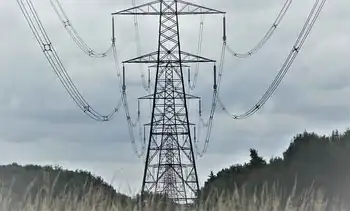FERC Says Con Ed Should Bear Generation Cost
NEW YORK -- - The New York ISO practice of using higher-cost generation resources in New York City to avoid possible power outages when thunderstorms threaten the city but then spread the cost of those generation resources across the state is unfair, FERC said.
In a draft order issued, FERC dismissed arguments by the NY-ISO and Consolidated Edison, the utility serving New York City, that the practice of shifting generation resources during severe weather benefits the entire state.
“Thunderstorm Alert” procedures developed by the New York State Reliability Council prior to the establishment of the NY-ISO stated that because Con Ed’s transmission and distribution system is vulnerable to storm-caused disruptions, more expensive generation resources in New York City and Long Island should be used in place of cheaper resources in upstate New York when storms threaten or occur in Con Ed’s service territory. Storms would theoretically limit the amount of power Con Ed could import from upstate sources, forcing the utility to rely on nearby sources.
FERC accepted the thunderstorm alert procedures when it approved the NY-ISOÂ’s market rules and tariff, but urged the ISO to consider alternatives. Last October, the ISO submitted a report saying the current procedure is appropriate. But the commission disagreed.
“On the merits, the commission finds that the current allocation of thunderstorm alert-related costs is unjust and unreasonable,” the draft order says. “These procedures are mandated by a local reliability rule designed to prevent recurrence of a major blackout in New York City, and which were, prior to the formation of the NY-ISO, the sole responsibility of Con Ed. The specific reliability benefits from these procedures inure solely to benefit New York City load, so that the costs should be allocated solely to that load.”
By spreading costs throughout the state, FERC said Con Ed has no real incentive to try to minimize the costs. The ISOÂ’s consultant, LECG, studied the storm cost issue and suggested two alternatives to the current cost allocation structure: assigning all costs to New York City load; or assigning all costs to both New York City and Long Island load, because some of the power plants that would be called on are located on Long Island. The Long Island Power Authority objected, saying only New York City benefits from the storm procedures. FERC in the draft order agreed with LIPA.
Related News

California Regulators Face Calls for Action as Electricity Bills Soar
SACRAMENTO - California residents and consumer groups are demanding relief as their electricity bills continue to climb, putting increasing pressure on state regulators to intervene. A recent op-ed in the San Francisco Chronicle highlights the growing frustration, emphasizing that California already has some of the highest electricity rates in the country, and these costs are only getting more burdensome.
Factors Driving High Bills
The rising electricity bills are attributed to several factors:
- Wildfire Mitigation and Liability: Utility companies are investing heavily in wildfire prevention measures, such as vegetation management and infrastructure hardening. The costs of these initiatives,…




